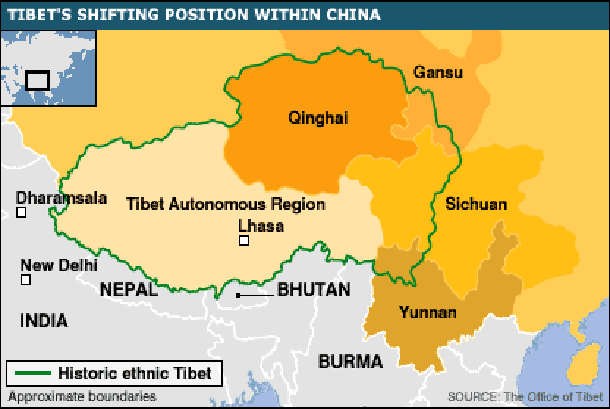 Dharamshala — China on Tuesday reiterated that the Tibetan "government-in-exile" has no legitimacy and its "election" is just "political slapstick," the state-run media Xinhua reported Wednesday.
Dharamshala — China on Tuesday reiterated that the Tibetan "government-in-exile" has no legitimacy and its "election" is just "political slapstick," the state-run media Xinhua reported Wednesday.
Foreign Ministry spokesperson Hong Lei made the remarks in response to the final "election" results announcement by the Tibetan officials on April 27, 2016. He added that the so-called "government-in-exile" is not recognized by any country.
As for the claim by the "government-in-exile" that fewer Tibetans-in -exile have gone to India because of hindrance by China's national security department, Hong said "this only reflects the unpopularity of the overseas Tibetan separatist groups."
Dr Lobsang Sangay has been re-elected as Sikyong of the Central Tibetan Administration amid hopes that the democratically elected political leader will vigorously pursue the cause of a genuine autonomy for all Tibetans living in the three traditional provinces of Tibet within the framework of the People's Republic of China.
A total of 150,000 Tibetan refugees live across the world, a majority of them in India. Of more than 90,000 registered voters, nearly 60,000 cast ballots on March 20, election officials said on April 27 in declaring that Dr Sangay had been re-elected as Sikyong, or political leader. Election officials also declared that a 45 parliamentarians have been elected and most of them are younger generation.
Dr Sangay, 47, was born and brought up in India. He won 57% of the vote to defeat his only rival, the Tibetan parliament speaker Mr Penpa Tsering, according to the Tibetan election officials in the northern Indian city of Dharamshala, where the CTA, is headquartered.
Both Sangay and Tsering have taken up the "middle way" approach advocated by His Holiness the Dalai Lama, 80, that seeks "genuine autonomy" for Tibetan people living in the three traditional provinces of Tibet rather than independence from China.
However, the CTA is nothing less than the Government of Tibet which was forced to accept the Seventeen Point Agreement in 1951.
China has ruled Tibet with an iron fist since Chinese troops invaded Tibet, in 1949. After the invasion, Tibet was divided into six parts of which five were incorporated into neighbouring Chinese provinces. What China refers to as Tibet nowadays is only a part of the original Tibet, called the Tibet Autonomous Region (TAR) and covers an area of about 122,200 sq, of Tibet's 850,000 sq, roughly the size of Western Europe.
The TAR is strictly governed by the Chinese Communist Party, with the active support of the military. The Party rules through branch offices in each province, autonomous region and autonomous prefecture. Subordinate to the Party is the government, which carries out policies designed by the Party.
China has established the full panoply of Party and government offices to administer TAR as exists in China. In Lhasa alone, there are over 60 departments and committees almost all of which are directly connected to their national offices in Beijing. Thus, TAR is "autonomous" in word only; in fact, the TAR has less autonomy than Chinese provinces. The top TAR post, the Party Secretary, has never been held by a Tibetan.


![Tibet has a rich history as a sovereign nation until the 1950s when it was invaded by China. [Photo: File]](/images/stories/Pics-2024/March/Tibet-Nation-1940s.jpg#joomlaImage://local-images/stories/Pics-2024/March/Tibet-Nation-1940s.jpg?width=1489&height=878)















